Turkey Tail (Trametes versicolor) and False Turkey Tail (Stereum ostrea) are different fungi often confused due to their similar fan-like appearance and colorful bands.
The key differences between the two lie in their physical attributes and medicinal properties. Turkey Tail has a leathery texture and displays a porous surface underneath, filled with tiny holes, while False Turkey Tail is smoother and does not have visible pores.
Regarding medicinal properties, Turkey Tail has been widely studied for its immune-boosting benefits, especially in cancer treatment. False Turkey Tail, on the other hand, lacks these medicinal properties.
Accurate identification is crucial as it aids in distinguishing between potentially beneficial species and those that are not or could be harmful. Always consult an expert or use a reliable field guide when identifying mushrooms.
In this article, we aim to delve deeper into the world of these two mushrooms, exploring their unique characteristics, ecological roles, and significance. We'll walk through a detailed identification guide, highlighting the subtle differences that can help you differentiate between the True Turkey Tail and the False Turkey Tail.
The Intricate Life of Mushrooms: A Peek into Biology
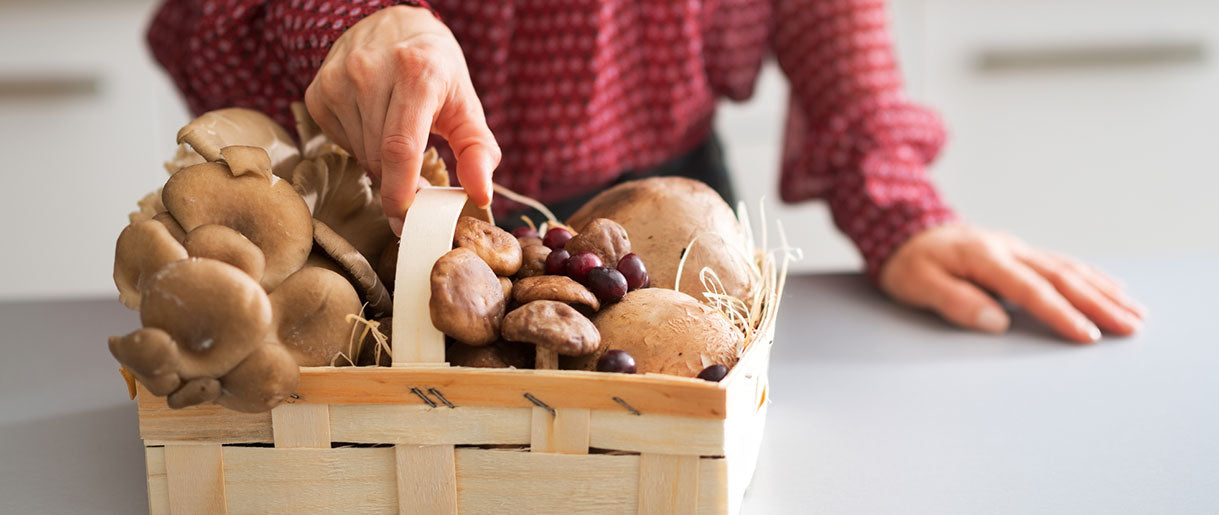
Often overlooked and frequently misunderstood, mushrooms are a fascinating branch of biology, providing a crucial link in our ecosystem. From the most popular consumer mushrooms to the lesser-known varieties like crust fungi, these organisms are much more than what meets the eye.
Mushrooms are the fruiting bodies of fungi that play a significant role in breaking down organic material and recycling nutrients into the soil. Their biology is unique and complex, with vast underground networks known as mushroom mycelium that support growth and reproduction.
The Art and Science of Mushroom Identification: Why It Matters
Identifying mushrooms is not just an engaging aspect of nature foraging; it's also a critical step in ensuring that mushrooms are safe for human consumption. Some popular consumer mushrooms have numerous health benefits, from immune support to potential cancer-fighting properties. However, these beneficial species often have many lookalikes, making correct identification a matter of utmost importance.
The value of accurate identification goes beyond potential health benefits. Many mushrooms play a significant role in their ecosystems, and understanding which species are present can provide important information about the health and diversity of these systems. Moreover, the practice of nature foraging and mushroom identification also emphasizes respect and awareness of the environment.
Common Pitfalls in Mushroom Identification: What to Avoid
Regarding identifying mushrooms, particularly the most popular consumer mushrooms, several common mistakes can lead to misidentification. The first relies solely on one characteristic, such as color or shape. While these features can help, they are often insufficient to identify definitively due to the many lookalikes.
Another common mistake is not considering the mushroom's environment. Many mushrooms have specific habitats, and knowing where a mushroom is likely to grow can help identify it. Lastly, it's important to remember that while many mushrooms have health benefits, consuming unidentified or misidentified mushrooms can lead to serious health risks. Always consult an expert or use a trusted field guide before consuming wild mushrooms.
Turkey Tail Mushroom Unveiled: Describing the True Turkey Tails
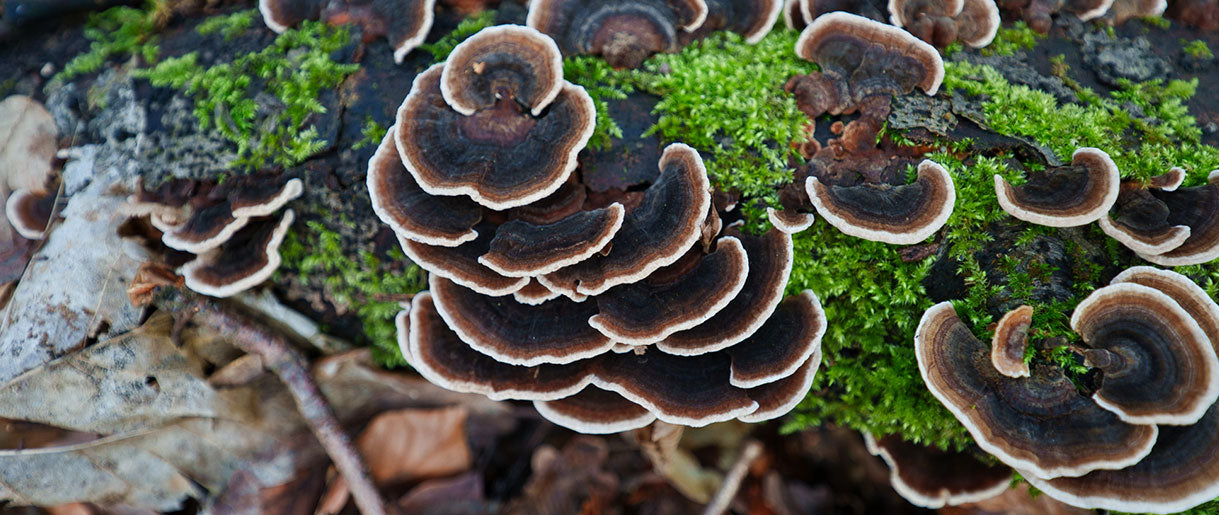
One of the most recognizable mushrooms in the forest, the Turkey Tail Mushroom (Trametes versicolor), is named for its colorful, fan-like appearance that resembles a turkey's tail. To identify Turkey Tail mushrooms correctly, you need to be aware of several characteristics that distinguish the true Turkey Tail from its lookalikes, including the False Turkey Tail mushroom.
True Turkey Tails are known for their tough texture, creating a rigid mushroom that can withstand various weather conditions. They display concentric circles of varying colors, ranging from browns and blues to creams and greens. The real mushrooms are especially recognized for their underside, filled with a densely packed poly-pore surface, as opposed to the smooth underside of many lookalikes.
In Harmony with Nature: Habitat and Ecological Role
Turkey Tail mushrooms are commonly found on rotting wood of deciduous trees, playing a significant ecological role by helping decompose organic material and recycle nutrients back into the environment.
Observing this habitat can help you in your Turkey Tail identification journey, differentiating them from the False Turkey Tail mushroom and other turkey tail look-alikes, which may favor slightly different environments.
Beyond Aesthetic Beauty: Medicinal and Cultural Significance
The Turkey Tail mushroom isn't just known for its beauty; it's also recognized for its medicinal properties. The mushroom has been used in traditional medicine for centuries, and recent studies have found that it contains compounds called beta-glucans, which can help boost the immune system.
Moreover, turkey tail can aid cancer treatment, speeding up recovery and enhancing the effectiveness of conventional treatment. This health benefit further underscores the need to accurately identify Turkey Tail from False Turkey Tail mushroom and other lookalikes.
Culturally, the Turkey Tail mushroom has found its way into the folklore and traditions of many societies, symbolizing longevity and health. Today, the mushroom's potential health benefits of turkey tail continue to be explored, making accurate Turkey Tail identification more critical than ever.
The Other Side of the Coin: Unpacking the False Turkey Tails
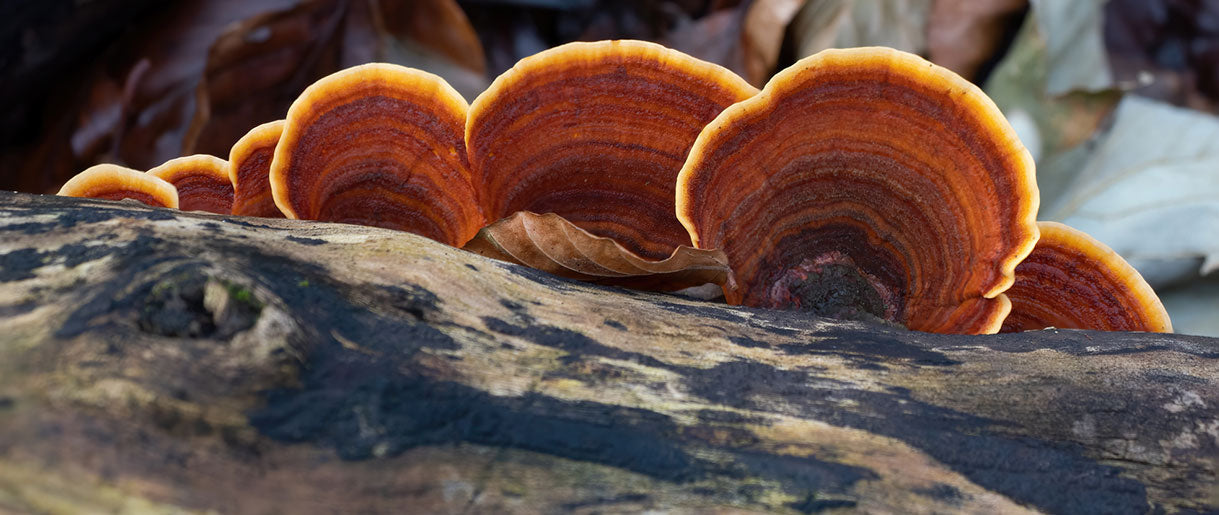
Often confused with the True Turkey Tail, the False Turkey Tail (Stereum ostrea) is another fungus that mimics the appearance of Turkey Tail mushrooms. As one of the most prominent Turkey Tail lookalikes, understanding its characteristics is crucial to identify Turkey Tail mushrooms correctly.
Like its true counterpart, False Turkey Tail grows in fan-shaped fruiting bodies with banded colors similar to Turkey's tail. However, unlike Trametes versicolor (the scientific name for True Turkey Tail), the False Turkey Tail's under-surface is smooth and may occasionally have a crust-like texture.
This crust fungus' underside is generally lighter and lacks the porous surface seen in True Turkey Tail mushroom, with barely visible pores to the naked eye. Its plane growth on dead hardwood trees and smooth underside sets it apart from Turkey Tail mushrooms and other lookalikes like the Violet Toothed Polypore.
Ecosystem Allies: Habitat and Ecological Role
While False Turkey Tail may not possess the medicinal qualities of True Turkey Tail, it plays an essential role in our ecosystems. It's prevalent and acts as a decomposer, primarily found on dead hardwood trees, helping break down complex organic matter.
The Absence of Medicinal Marvel: The Non-Medicinal Aspect of False Turkey Tail
Unlike the True Turkey Tail mushroom, the False Turkey Tail lacks known medicinal properties. The True Turkey Tail's medicinal potential has been the subject of several research studies, while the False Turkey Tail has primarily been of interest due to its prevalence and role in the ecosystem.
Separating the Fake from the Real: Key Defining Factors of These Mushrooms
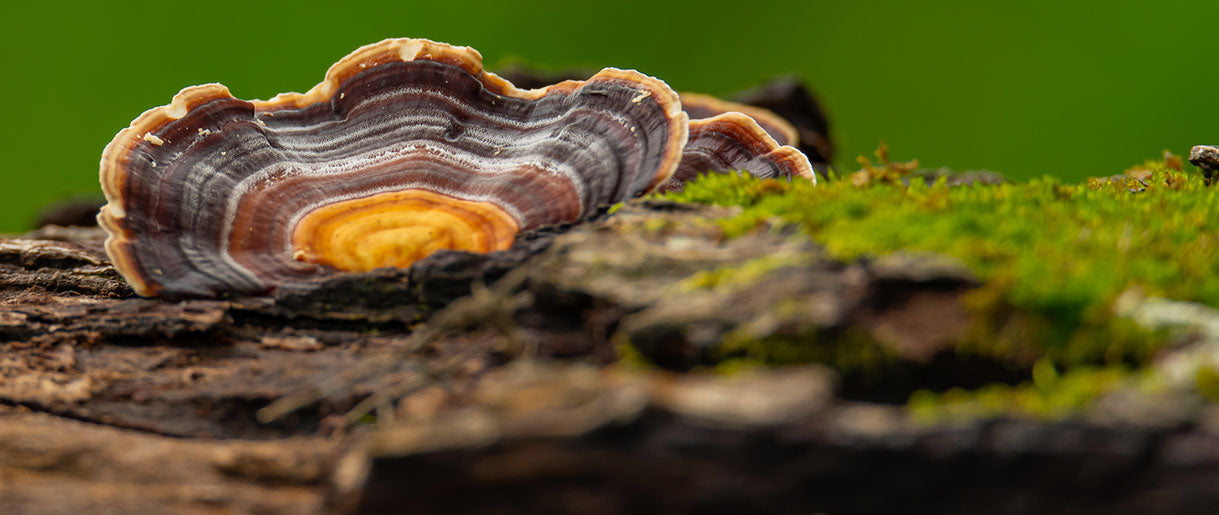
Drawing the Line: Physical Differences in Turkey Tail Vs. False Turkey Tail
When comparing Turkey Tail vs. False Turkey Tail, several key physical differences allow for accurate identification, even though they are commonly considered Turkey Tail lookalikes.
Color
Both mushrooms exhibit a stunning array of colors, but subtle differences exist. Turkey Tail mushrooms usually showcase a more vibrant range of colors, including browns, blues, creams, and sometimes greens, while False Turkey Tail often displays more muted tones.
Texture
Turkey Tail mushrooms have a leathery, tough texture. On the other hand, False Turkey Tail is generally thinner and somewhat flexible to the touch.
Pore Surface
The under-surface of the fruiting body is one of the most significant differences between Turkey Tail and False Turkey Tail. Turkey Tail has a porous underside filled with tiny, closely packed holes, while False Turkey Tail has a smooth, almost velvety underside with virtually invisible pores.
In Nature's Arms: The Difference in Habitat
Although both fungi can be found on decaying wood, Turkey Tail mushrooms are more commonly found on dead hardwoods and are not very particular about the species of wood they inhabit. On the other hand, False Turkey Tail can often be found on a narrower range of wood types, with a slight preference for hardwoods.
Unveiling the Healing Power: The Medicinal Divide
Another defining factor in comparing Turkey Tail vs. False Turkey Tail is their medicinal properties. True Turkey Tail mushrooms are highly valued for their medicinal properties, particularly their immune-boosting effects, thanks to compounds like polysaccharide-K and beta-glucans. In contrast, False Turkey Tail lacks known medicinal properties, making accurate identification critical for those seeking the health benefits of Turkey Tail mushrooms.
The Path to Precision: A Detailed Guide to Identifying Turkey Tail and False Turkey Tail

Correctly identifying Turkey Tail and False Turkey Tail can be rewarding but challenging. Here are some key features to consider:
Turkey Tail (Trametes versicolor)
Look for a tough, leathery texture with concentric, colorful rings on the top surface. The color pattern often resembles a turkey's tail—hence the name. It should have tiny pores (not visible to the naked eye) instead of a smooth surface on the underside. The turkey tail extracts used for medicinal purposes are derived from this mushroom.
False Turkey Tail (Stereum ostrea)
While similar in coloration to the Turkey Tail, the False Turkey Tail is typically softer and thinner. It lacks distinctive pores on its underside, usually smooth and slightly lighter in color.
Navigating the Fungal Forest: Common Misidentification Issues and How to Avoid Them

Misidentification is a common issue, particularly with Turkey Tail and its lookalikes. One common mistake is relying solely on color for identification. While color patterns can help, they should not be the only identifying feature. The presence (or absence) of pores on the underside of the mushroom, its texture, and the type of wood it grows on should all be considered for accurate identification.
Wisdom of the Woods: Consulting with Experts
No matter how much you study, there's always a risk of misidentification when foraging mushrooms. That's why consulting with an expert or experienced forager is always wise. Joining local foraging groups or mycological societies can provide valuable learning opportunities for those with more experience.
Correct identification is crucial for safety and gaining the most health benefits, particularly if you're seeking Turkey Tail extracts for their medicinal properties. With practice, patience, and the guidance of experts, you can become proficient in distinguishing between Turkey Tail and its lookalikes.
Hidden Hazards: The Potential Dangers of Misidentifying Mushrooms
Mushrooms are an incredibly diverse group of organisms, and while many are safe and beneficial for consumption, others can be harmful or even deadly. Misidentification of mushrooms is a real risk, particularly for novice foragers.
While Turkey Tail and False Turkey Tail are non-toxic, it's possible to mistake other toxic species for these mushrooms, particularly for the untrained eye. Some harmful mushrooms may share visual similarities with Turkey Tail or False Turkey Tail, making the identification process tricky. Consuming a toxic mushroom can lead to various symptoms, from mild gastrointestinal upset to severe liver damage or, worst cases, even death.
A Step into Stewardship: The Importance of Responsible Foraging
Beyond personal safety, there's another reason why correct identification is vital—responsible foraging. Responsible foraging involves harvesting in a way that doesn't negatively impact the environment or deplete the mushroom population.
Overharvesting, particularly of the wrong species, can disrupt local ecosystems, affecting everything from soil quality to animal habitats. You ensure you're not unintentionally harming non-target species or disrupting delicate ecological balances by correctly identifying the mushrooms you're after.
FAQs About Turkey Tail Vs. False Turkey Tail
Can I Grow Turkey Tail Mushrooms At Home?
Yes, you can grow Turkey Tail mushrooms at home! Growing your mushrooms can be an enjoyable and rewarding hobby. Here are the general steps you'll need to follow:
1. Purchase a Mushroom Spawn: You must purchase a Turkey Tail mushroom spawn. These can be found online or at a local garden supply store.
2. Prepare the Substrate: Turkey Tail mushrooms thrive on a substrate of hardwood. Commonly used materials include hardwood logs, sawdust, or wood chips. You'll want to pasteurize or sterilize your substrate to kill potential contaminants.
3. Inoculate the Substrate: You can introduce the mushroom spawn once your substrate is prepared. This process is known as inoculation. Make sure to distribute the spawn throughout the substrate evenly.
4. Incubate: The substrate must be kept in a warm and humid environment after inoculation to promote mycelium growth. This stage can take several weeks. The mushroom's mycelium, the root structure, will colonize the substrate during this time.
5. Initiate Fruiting: After fully colonizing the substrate, you must change the environmental conditions to initiate fruiting. This often involves reducing the temperature and increasing light and fresh air exposure.
6. Harvest: Once your Turkey Tail mushrooms have grown to their full size, they are ready to be harvested and enjoyed!
Remember, every type of mushroom has specific growing conditions, so it's crucial to research and ensure you're providing the right environment for your Turkey Tail mushrooms. It may take some trial and error, but you can cultivate these beautiful and beneficial mushrooms at home with patience and care.
Are There Any Side Effects Associated With Consuming Turkey Tail Extracts?
While Turkey Tail extracts are generally considered safe for most people, they may cause some side effects in certain circumstances. Potential side effects of mushroom supplements can include digestive upset, such as diarrhea, bloating, or gas. These effects are typically mild and subside as your body adjusts to the supplement.
Sometimes, people may have an allergic reaction to Turkey Tail extracts. Symptoms of an allergic reaction could include rash, itching, swelling, severe dizziness, or trouble breathing. If you experience these symptoms, you must stop taking the extract and seek medical attention immediately.
Are There Any Poisonous Turkey Tail Look-Alikes?
Turkey Tail mushrooms have a variety of lookalikes, but fortunately, most of these are not toxic.Two common non-toxic lookalikes include the False Turkey Tail (Stereum ostrea) and the Violet Toothed Polypore (Trichaptum biforme). Both have physical similarities to Turkey Tail but lack its medicinal properties.
However, while these common lookalikes are not poisonous, other types of mushrooms can be, and it's possible to mistake a harmful species for Turkey Tail if you're not familiar with key identifying features. Some harmful species might have similar coloration or grow in similar habitats, so it's crucial to pay attention to details like the texture, the type of wood the mushroom is growing on, and mainly the underside of the mushroom cap.
As a general rule of thumb, it's best not to consume any wild mushroom unless you're sure of its identification. If you're new to foraging, consider joining a local mycological society or engaging an expert to help you learn how to identify mushrooms accurately and safely.
Key Takeaways
Navigating the world of fungi can be a thrilling journey, especially when diving into Turkey Tail and False Turkey Tail mushrooms. These two species, while similar in appearance, exhibit critical differences that are important for the keen observer.
The Turkey Tail mushroom (Trametes versicolor) is known for its rich, vibrant color bands, tough texture, and tiny pores on the underside. It is revered for its medicinal properties, particularly its immune-boosting benefits derived from the active compound beta-glucans.
On the other hand, the False Turkey Tail (Stereum ostrea), although mimicking Turkey Tail's color patterns, lacks the beneficial compounds and has a smooth, pore-less underside. They serve as a stark reminder that not everything that glitters is gold, or in this case, not every mushroom that looks like a Turkey Tail carries its remarkable health benefits.
As we've discussed, careful identification is critical for foraging mushrooms. The world of fungi is beautifully diverse, but it also houses species that can be harmful when consumed. Accurate identification ensures you're reaping the desired benefits and protects you from potential dangers.
We hope this guide on Turkey Tail and False Turkey Tail mushrooms has been helpful. If you have questions, observations, or experiences you'd like to share, please leave a comment below. We'd love to hear from you and continue this enlightening discussion about the world beneath our feet.




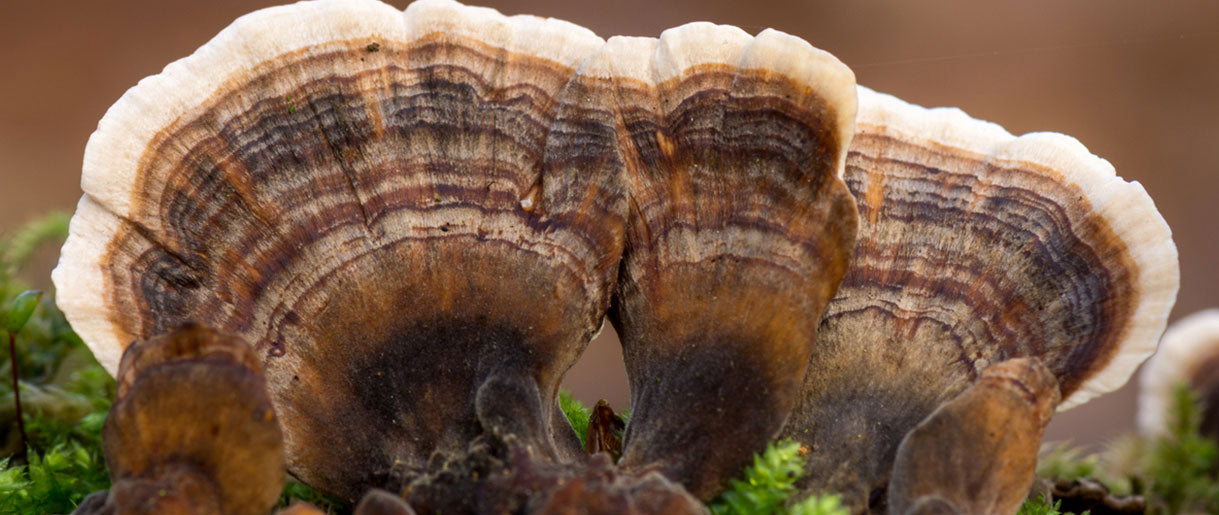





Let Us Know Your Comments